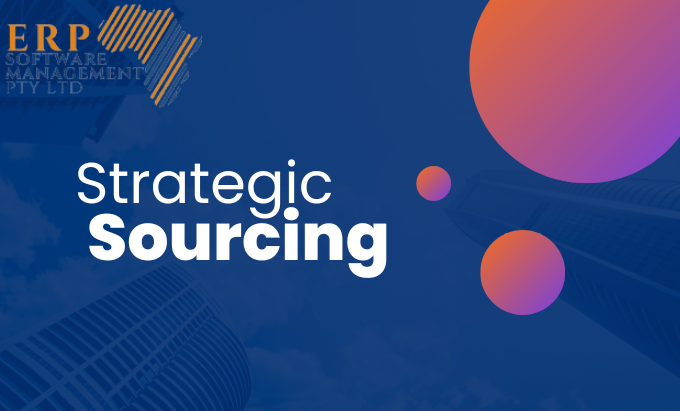In today’s business environment, strategic sourcing is a critical practice that can help organizations to optimize their procurement process and achieve cost savings. By identifying, evaluating, and selecting suppliers that offer the best value for your company’s needs, you can improve supply chain efficiency and reduce costs associated with procurement.
One of the key benefits of strategic sourcing is that it enables companies to analyze their purchasing patterns and identify areas where they can reduce costs. By carefully evaluating supplier options, negotiating favorable terms, and developing long-term relationships with selected suppliers, organizations can achieve better pricing and favorable conditions that can lead to improved profitability.
Moreover, strategic sourcing can help companies to enhance their overall competitiveness. By selecting suppliers based on their capabilities and quality, companies can improve the quality of their products and services, reducing the risk of supply chain disruptions and improving customer satisfaction. This can lead to improved market share, revenue growth, and long-term business success.
To successfully implement strategic sourcing, organizations should foster collaboration and communication with suppliers, monitor supplier performance, and implement continuous improvement initiatives. By regularly reviewing and adjusting their procurement strategies, organizations can achieve sustainable cost savings and optimize supply chain efficiency.
Read Also: CompTIA Training 11 Amazing Courses
Why is Strategic Sourcing Important?
Strategic sourcing has become a critical aspect of procurement management for organizations of all sizes. It is a systematic and structured approach that enables companies to identify, evaluate, and select the right suppliers that can provide the best value for their procurement needs.
One of the primary benefits of strategic sourcing is cost savings. By selecting the right suppliers, organizations can negotiate favorable terms, including pricing, payment terms, and delivery schedules. This, in turn, can reduce the overall cost of procurement, which can result in significant savings for the organization. Additionally, by developing long-term relationships with selected suppliers, organizations can achieve more predictable and stable costs over time, further enhancing their cost savings.
Strategic sourcing can improve the quality of products and services. By selecting suppliers based on their capabilities and quality, organizations can ensure that they receive the highest quality products and services. This, in turn, can improve customer satisfaction and reduce the risk of quality issues, returns, and complaints.
Finally, strategic sourcing can enhance overall competitiveness. By selecting the right suppliers, organizations can optimize their supply chain efficiency, reduce lead times, and increase their responsiveness to customer needs. This can enable them to compete more effectively in the market and gain a competitive advantage over their competitors.
Key Elements of Strategic Sourcing
Strategic sourcing is a complex and multi-faceted process that involves several key elements. These elements are critical to the success of strategic sourcing and enable organizations to achieve cost savings, improve quality, and enhance their overall competitiveness. The following are the key elements of strategic sourcing:
Understanding the company’s procurement needs and priorities:
This involves identifying the goods and services that the company needs, as well as the budget and timeline for procurement. It also involves understanding the company’s overall goals and objectives to align procurement with the company’s strategic vision.
Identifying potential suppliers and evaluating their capabilities
This involves conducting market research and identifying potential suppliers that can meet the company’s procurement needs. It also involves evaluating suppliers’ capabilities, quality, and reputation to ensure that they are the right fit for the company.
Negotiating with suppliers to obtain favorable terms and pricing
This involves engaging in negotiations with suppliers to obtain favorable terms and pricing, such as volume discounts, payment terms, and delivery schedules. Negotiations should be fair and transparent to build a long-term relationship with the supplier.
Developing long-term relationships with selected suppliers
This involves building strong and long-lasting relationships with selected suppliers. It includes fostering communication and collaboration, sharing information, and working together to achieve mutual goals and objectives.
Monitoring supplier performance and implementing continuous improvement initiatives
This involves monitoring supplier performance to ensure that they meet agreed-upon standards and metrics. It also involves implementing continuous improvement initiatives to identify areas for improvement, address any issues or concerns, and drive innovation.
Benefits of Strategic Sourcing
Strategic sourcing is a powerful approach that provides a range of benefits for organizations across industries. By implementing strategic sourcing, companies can achieve cost savings, improve product and service quality, mitigate supply chain risks, enhance supplier relationships, and increase market competitiveness and profitability. The following are the key benefits of strategic sourcing:
Cost savings through improved procurement practices
Strategic sourcing enables companies to optimize procurement practices, identify cost-saving opportunities, and negotiate favorable pricing and terms with suppliers. By selecting suppliers that offer the best value for money, companies can reduce procurement costs and maximize their ROI.
Higher quality products and services
Strategic sourcing emphasizes supplier evaluation and selection based on their capabilities, quality, and reputation. By choosing suppliers that meet strict quality standards, companies can improve the quality of their products and services, which can lead to increased customer satisfaction and loyalty.
Reduced supply chain risks
Strategic sourcing enables companies to manage supply chain risks more effectively by developing long-term relationships with suppliers and collaborating with them to identify and mitigate potential risks. This can minimize the impact of supply chain disruptions, reduce inventory costs, and improve product and service delivery times.
Enhanced supplier relationships and collaboration
Strategic sourcing involves developing strong relationships with suppliers based on transparency, trust, and collaboration. By working together to identify opportunities for improvement, streamline processes, and drive innovation, companies can achieve greater success and build long-lasting partnerships with suppliers.
Improved market competitiveness and profitability
Strategic sourcing enables companies to gain a competitive advantage by optimizing procurement practices, reducing costs, improving quality, and enhancing supply chain efficiency. By differentiating themselves from competitors, companies can increase market share, revenue, and profitability.
Challenges of Strategic Sourcing
While strategic sourcing can provide significant benefits to organizations, it is not without its challenges. The following are the key challenges that organizations may face when implementing strategic sourcing:
Identifying and selecting the right suppliers
One of the biggest challenges of strategic sourcing is identifying and selecting the right suppliers that can meet the organization’s procurement needs. It involves conducting market research, evaluating potential suppliers, and negotiating favorable terms and pricing.
Developing and maintaining effective supplier relationships
Strategic sourcing involves developing and maintaining long-term relationships with suppliers. This requires open communication, collaboration, and a shared commitment to achieving mutual goals and objectives.
Ensuring compliance with regulatory requirements and ethical standards
Strategic sourcing requires organizations to comply with various regulatory requirements and ethical standards, such as anti-corruption laws and environmental regulations. Failure to comply with these requirements can lead to legal and reputational risks.
Managing supply chain disruptions and risks
Strategic sourcing requires organizations to manage supply chain disruptions and risks, such as natural disasters, geopolitical tensions, and economic instability. This requires a proactive approach to risk management, contingency planning, and supplier diversification.
Balancing short-term cost savings with long-term strategic objectives
Strategic sourcing involves balancing short-term cost savings with long-term strategic objectives. While cost savings are important, organizations must also consider other factors such as product quality, supplier relationships, and supply chain resilience.
Tips for Successful Strategic Sourcing Implementation
Implementing strategic sourcing can be a complex process that requires careful planning, execution, and management. The following are the key tips for successful strategic sourcing implementation:
- Develop a comprehensive procurement strategy: A well-defined procurement strategy is the foundation of successful strategic sourcing. It should align with the organization’s overall business objectives, outline the procurement process, identify key performance indicators, and establish supplier selection criteria.
- Conduct market research and supplier evaluation: Market research and supplier evaluation are critical components of strategic sourcing. It involves identifying potential suppliers, evaluating their capabilities, quality, and reliability, and selecting the ones that offer the best value for money.
- Negotiate favorable pricing and terms: Negotiating favorable pricing and terms with suppliers is essential to achieving cost savings and maximizing ROI. It requires strong negotiation skills, market knowledge, and a deep understanding of the supplier’s business and pricing strategies.
- Develop and maintain strong supplier relationships: Developing and maintaining strong relationships with suppliers is crucial to the success of strategic sourcing. It involves open communication, collaboration, and a shared commitment to achieving mutual goals and objectives.
- Monitor supplier performance and implement continuous improvement initiatives: Continuous monitoring of supplier performance is essential to ensure that they are meeting the organization’s quality and delivery requirements. It also provides an opportunity to identify areas for improvement and implement initiatives that drive cost savings and efficiency.
- Use technology to streamline the procurement process: Technology plays a critical role in streamlining the procurement process and improving efficiency. It includes using e-procurement systems, analytics tools, and supplier portals to automate procurement processes, track supplier performance, and identify cost-saving opportunities.
- Ensure compliance with regulatory requirements and ethical standards: Compliance with regulatory requirements and ethical standards is essential to avoid legal and reputational risks. It involves developing policies and procedures that align with applicable laws and regulations and ensuring that suppliers comply with them.
Conclusion
Implementing strategic sourcing can help organizations achieve significant cost savings, improve the quality of their products and services, reduce supply chain risks, and enhance their competitiveness. By developing a comprehensive procurement strategy, conducting market research, negotiating with suppliers, developing strong supplier relationships, monitoring supplier performance, and using technology to streamline the procurement process, organizations can overcome the challenges of strategic sourcing and reap its benefits. So, if you want to transform your procurement process and achieve cost savings, start implementing strategic sourcing today!


Leave a Reply